INDIAN ARMED FORCES CHIEFS ON OUR RELENTLESS AND FOCUSED PUBLISHING EFFORTS

The insightful articles, inspiring narrations and analytical perspectives presented by the Editorial Team, establish an alluring connect with the reader. My compliments and best wishes to SP Guide Publications.

"Over the past 60 years, the growth of SP Guide Publications has mirrored the rising stature of Indian Navy. Its well-researched and informative magazines on Defence and Aerospace sector have served to shape an educated opinion of our military personnel, policy makers and the public alike. I wish SP's Publication team continued success, fair winds and following seas in all future endeavour!"

Since, its inception in 1964, SP Guide Publications has consistently demonstrated commitment to high-quality journalism in the aerospace and defence sectors, earning a well-deserved reputation as Asia's largest media house in this domain. I wish SP Guide Publications continued success in its pursuit of excellence.
Boost to Space Programme
Department of Space (DOS) has been allocated 13,700 crore for the FY 2022-23. The jump in the budgetary allocation to DOS is because of the planned launch of the first Gaganyaan space mission this year, plus the planned launch of Aditya L1 to the Sun, besides others
 |
The Author is Former Director General of Information Systems and A Special Forces Veteran, Indian Army |
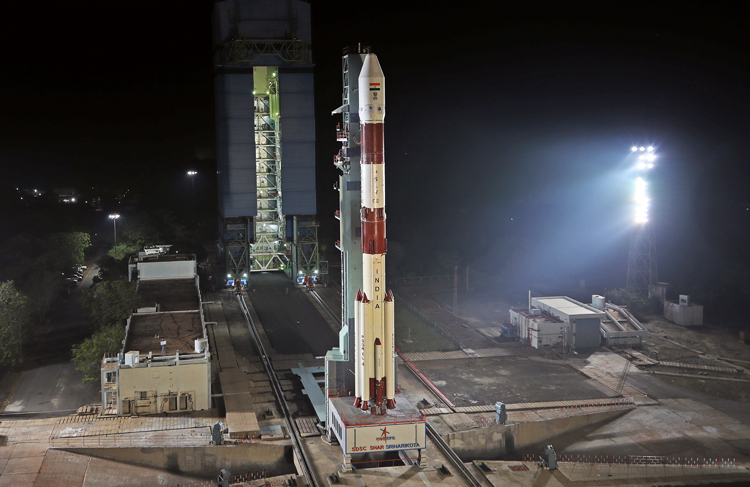
Delivering her budget speech in Parliament on February 1, 2022, the Finance Minister announced 14,217 crore allocation to the Ministry of Science & Technology in the next financial year. This is a significant increase of 13,438 crore compared to the current financial year which has an allotment of 833 crore. Within the 14,217.46 crore allocated, the Department of Science and Technology has received the biggest chunk of the allocations with 6,000 crore earmarked for infrastructure, research and development, while the Department of Biotechnology and Department of Scientific and Industrial Research have been allocated 2,581 crore and 5,636.46 respectively.
The Gaganyaan mission was delayed due to disruptions caused by the COVID-19 pandemic. But now under the first stage, the first uncrewed mission will take place, probably in the second half of 2022. By the end of the year, the second uncrewed mission will take place.

Significantly, the Department of Space (DOS) has been allocated 13,700 crore for the FY 2022-23. This is nearly 1,000 crore more than last financial year's allocation. The jump in the budgetary allocation to DOS is because of the planned launch of the first Gaganyaan space mission this year which will be unmanned, plus the planned launch of Aditya L1 to the Sun and the development of a mission to Venus, besides others.
The Gaganyaan mission was delayed due to disruptions caused by the COVID-19 pandemic. But now under the first stage, the test vehicle flight for the validation of crew escape system performance and the first uncrewed mission will take place, probably in the second half of 2022. By the end of the year, the second uncrewed mission will take place, which will carry the space-faring human-robot ‘Vyommitra’, developed by ISRO. Subsequently, the first crewed mission taking three humans to space is planned for in 2023. ISRO has already conducted the qualification test of Gaganyaan’s cryogenic engine for 720 seconds, ensuring the reliability and robustness of the cryogenic engine for the mission.
The first crewed mission taking three humans to space is planned for in 2023
ISRO is also roping in private firms including start-ups to handle various aspects of the mission. “More than 500 industries are involved in the launch of Gaganyaan, with several research modules including an indigenous health research module,” Science & Technology Minister Jitendra Singh told the Rajya Sabha recently, adding, “This was made possible as for the first time in 70 years, the sector has been unlocked for private participation to make India a competitive space market.” The Gaganyaan mission, India’s 9,023 crore maiden human space programme in 2023, will make India the fourth country to take humans to space, after the US, Russia and China.
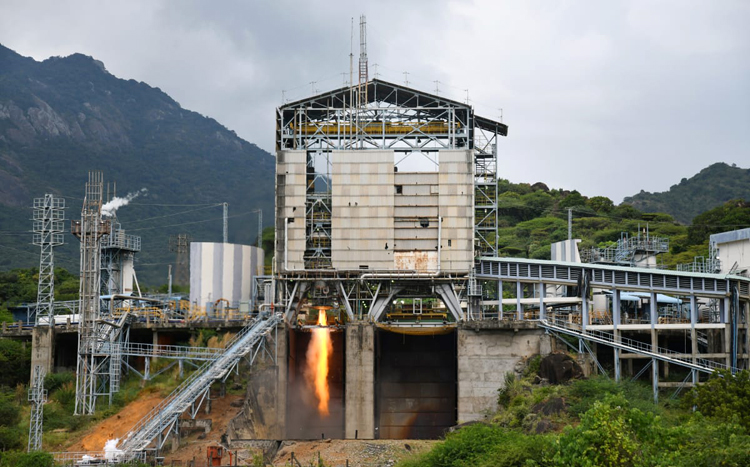
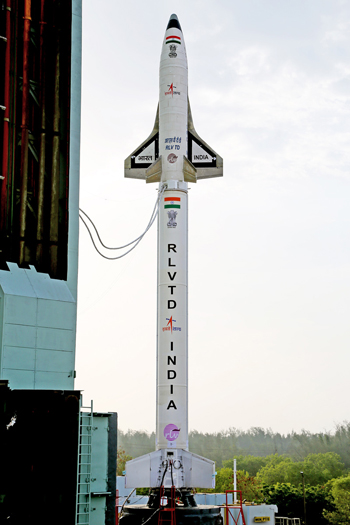
ISRO Chief, S. Somanath recently told media:
- Two major space missions will be launched in 2022.
- The Gaganyaan mission is top priority which would help lay down a robust foundation for a sustainable human flight programme in the long run.
- Development of the Reusable Launch Vehicle (RLV) to reduce launch costs is in advanced stage. RLV will reduce launch costs – we need a RLV that can be used 15 times.
- Design and development of the Small Satellite Launch Vehicle (SSLV) is almost done and ISRO will be launching it within months.
- Chandrayan-3 and Aditya-L1 missions are some of the projects awaiting immediate attention.
- ISRO aims for the capability of transmitting directly to handheld devices without any time lapse, which will revolutionise the information and the infotainment industry.
- With the help of Artificial Intelligence, ISRO hopes to bring out more services and bringing benefit to more people.
- More eyes in the sky would help fine-tune the existing meteorological models along with meeting other observation needs.
- ISRO is planning to put an old satellite into graveyard orbit in the near future. This is done when a satellite is nearing its life and the remaining life is less than a few months and when the controls are still active.

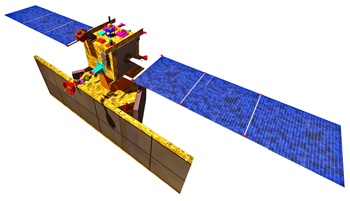
On February 14, 2022, ISRO’s PSLV-C52 will be launching an earth observation satellite (EOS-04), weighing 1,710 kg into a sun-synchronous polar orbit of 529 km. EOS-04 is a Radar Imaging Satellite designed to provide high-quality images under all weather conditions for applications such as Agriculture, Forestry & Plantations, Soil Moisture and Hydrology, and Flood mapping. The rocket will also carry two small satellites as co-passengers. They include one student satellite (INSPIREsat-1) from Indian Institute of Space Science & Technology (IIST) in association with the Laboratory of Atmospheric & Space Physics at the University of Colorado, Boulder, and a technology demonstrator satellite (INS-2TD) from ISRO, which is a precursor to India-Bhutan Joint Satellite (INS-2B).
The government opened up the space sector in June 2020 to allow participation of private firms in space activities. The first public sector undertaking (PSU) in the space sector was set up - New Space India Limited (NSIL). Concurrently the Indian National Space Promotion and Authorization Centre (IN-SPACe) was established as the promoter and regulator of space activities in the country by non-government and private entities.
With the recently undertaken policy initiatives and private sector participation, the Indian space sector is expected to capture a larger share of the global space economy, which was close to $447 billion in 2020
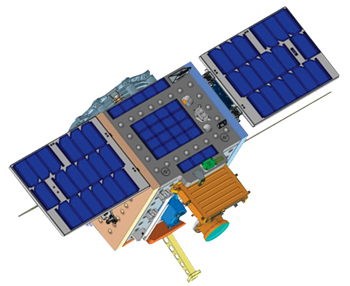
The Economic Survey 2021-22, presented by Finance Minister Nirmala Sitharaman in Parliament on February 1, said with the recently undertaken policy initiatives and private sector participation, the Indian space sector is expected to capture a larger share of the global space economy, which was close to $447 billion in 2020.
Significantly, IN-SPACe has received close to 40 proposals from the private sector and academia for activities ranging from manufacturing of launch vehicles and satellites to earth observation applications. More than 100 start-ups are working in the space sector, with 47 start-ups registering with the government in 2021.
Tata Sky has recently signed a memorandum of understanding (MoU) with NSIL for utilising the capacity on board the upcoming communication satellite GSAT-24, to be built by ISRO and launched by Arianespace. Five private satellites have already been tested at ISRO facilities, and four student satellites were launched aboard the PSLV C-51. Six MoUs have been signed with private/academic entities for sharing technical expertise and facilities.

Indian National Space Promotion and Authorization Centre (IN-SPACe) has received close to 40 proposals from the private sector and academia for activities ranging from manufacturing of launch vehicles and satellites to earth observation applications
Hyderabad-based Skyroot Aerospace Private Ltd is planning to test launch its Vikram-1 rocket with multiple satellites by end 2022. Pawan Kumar Chandana, Co-Founder and CEO, Skyroot Aerospace told media recently, "Our maiden rocket launch will be with a couple of satellites from a mobile launch pad or technically called transporter, erector and launcher. The launch will happen from India's rocket port at Sriharikota belonging to Indian Space Research Organisation (ISRO)." Skyroot Aerospace has inked one satellite launch agreement with Indian space start-up Dhruva Space and more agreements are in the process.
President Ram Nath Kovind acknowledged the achievements in the space sector in his address to the joint sitting of both the Houses of Parliament, saying, "Space sector has now been opened up for private sector, providing a horizon of endless possibilities. The formation of IN-SPACE last year is one such important step to enhance India's space capabilities."
At present, India accounts for less than two per cent of the global space economy, much behind the major players - the US and China. But with the opening up of the space sector, there is no reason why we cannot capture larger share of the global space economy. The size of the global space economy in 2020 was close to $447 billion. However, the Space Team of Morgan Stanley estimates that the global space industry could surge to over $1 trillion by 2040.





